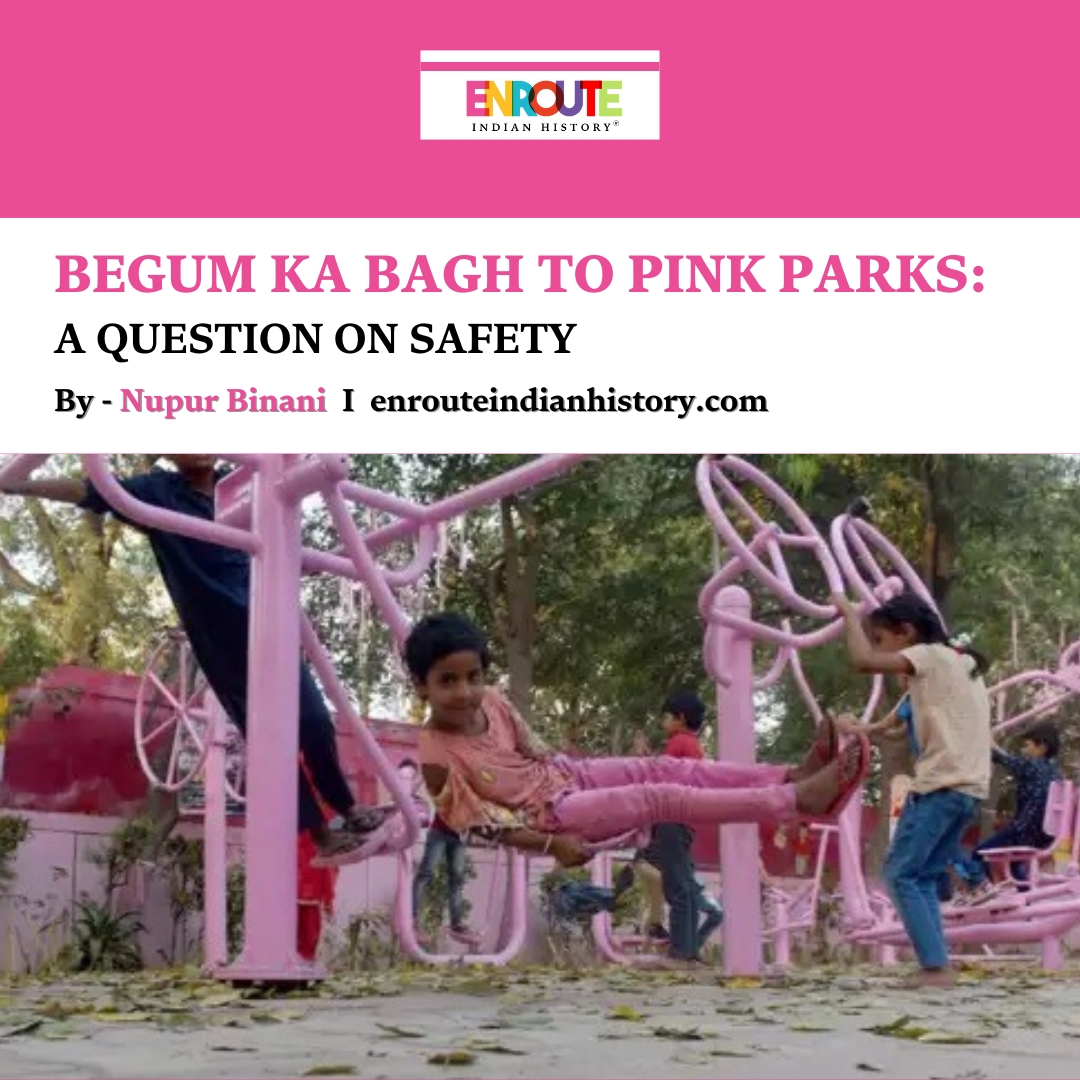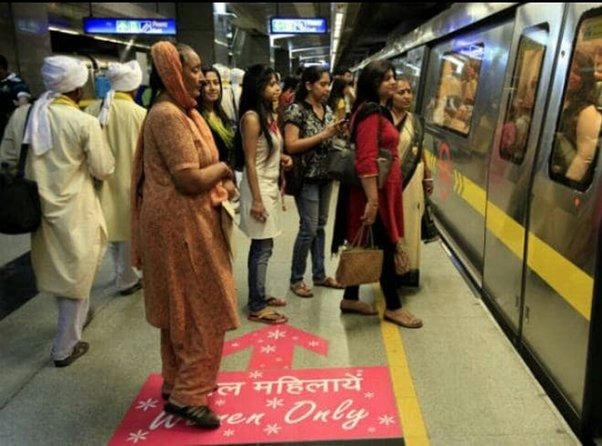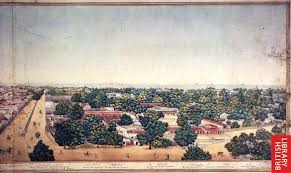
“Let’s board the women’s coach” I heard my friend saying this as we were entering the Delhi metro. She justified it by saying it to be a safe place institing for more such places in Delhi. Crossing by Chandni Chowk metro station, I remembered how a woman single handedly constructed the lanes of today’s most famous market- Chandni Chowk.

In an unassuming part of India’s capital city, amidst winding alleys lined with attar and chadar sellers, lies the 800-year-old dargah of Hazrat Nizamuddin Auliya one of the most revered saints in Sufism. From dusk to dawn, 1000s of devotees throng this bustling complex to pay their respects. Yet, few know that Delhi’s most famous Sufi shrine is also home to the tomb of one of the most powerful women of mediaeval India, Jahanara Begum. The Mughal empire is known for marvellous architecture where in Jahanara Begum played an imminent role. In 1648, Mughal court was shifted to Shahjahanabad(Old Delhi), which proved to be a testament to Mughal Glory and home to magnificent monuments such as Red Fort and the Jama Masjid. Of all women, Jahanara was the greatest single builder responsible for 5 out of 19 buildings of Shahjahanabad commissioned by women. One of her most prominent and revered builds was the central marketplace which had a paradise canal running through it.The Old Delhi stretched from Shahjahanabad’s Lahori Gate to the Fatehpuri Masjid (built by Shah Jahan’s wife Fatehpuri Begum in the same year). It harboured around 1560 shops that traded in a variety of items ranging from kebabs, rubies and emeralds to flowers, glass huqqas and eyeglasses from China, indeed the centre for trade. At the centre of the bazaar, the canal broadened to form an octagonal pool. To the north of this pool, Jahanara built a caravanserai (an inn for accommodation of caravans) and to the south a hammam (a communal bathhouse). This canal acted as oxygen for Delhi which converted dusty lanes into greener areas, the flowing water filled pools for all. Jahanara’s vision for Delhi’s beatification gave the name- Chandni chowk meaning the reflection of moonlight on the central pool of the market. Even after Princess Jahanara’s passing in 1681, Chandni Chowk remained a crucial artery in Shahjahanabad. It wasn’t just a marketplace anymore, but a place steeped in history. Unfortunately, during the 1857 Rebellion, the area faced heavy bombardment, damaging many buildings. Once the British took over the walled city, they made a conscious effort to erase Mughal power. They tore down majestic Mughal architecture, replacing it with military barracks but till date Chandni Chowk stands as a living testimony of broken history.

In this patriarchal world, the princess broke the rules and wrote the new history, taking the empire’s halters in her hand she created the golden pages of Mughal history. Being a woman, she had different views, unique mindset and peculiar vision, what other rulers failed to understand, Jahanara understood problems of people from its ground level. Her biggest innovation in the aspect of women’s safety was the establishment of “Begum ka Bagh”. The place where the Delhi Town Hall stands today used to be a Sarai, known as “Begumabad” or “Begum ka Baag”. We find descriptions of Begum ka Bagh in many history books and in the accounts of travellers who saw it then. All of them agree that it was indeed a thing of beauty, enclosed within a high stone wall on all sides, it had pools and channels for running water. There were fountains and canopies supported on 12 pillars of red stone (called bara dari). These provided cool resting places for the people who came to the garden. The water in the channels came from a special canal system and helped in irrigation. Being a beautiful garden, it was the favourite rest place for princesses and other women of town. The place bagh witnessed celebration of various festivals like Pankhon ka mela. It was a fair meant exclusively for ladies and was celebrated for a whole week with stalls for lovely embroidered kurtas and dupattas, colourful bangles and other jewellery, toys and all kinds of goodies to eat accompanied with songs, poetry and other festive rituals. But why is this bagh topic of our interest ? and how is it related to women’s coaches? The begum ka bagh was not an ordinary royal garden for all while it was a specific park for women of town with no entry of men, indeed in a world of male dominance, begum ka bagh was an assertive way to make people realise their root level.

There was a Persian poet in the court of Shah Jahan, who was very curious about the place and wanted to see it. He was equally keen to catch a glimpse of the princess who had set out this garden and the beautiful Chandni Chowk. The poet wore a burkha over his clothes and sneaked into the garden one day. He saw the royal ladies laughing and joking with each other. The poet was dazzled by Jahanara’s beauty and dignity. He composed a poem about her on the spot. He was just writing it down when Princess Jahanara caught sight of him. She walked up to the poet and asked him what he was doing. While she threatened to punish him, he pleaded with her to hear his poem first. As he recited his poetry, Jahanara and the other ladies in the garden were enchanted by his words. With a little encouragement from the ladies to present the poet with an award instead of punishment, Jahanara handed him a purse filled with coins, and added: “Please don’t stay here another moment. Run as fast as you can! You should never have come here, you know.” The poet saluted her and left the garden immediately. But once Emperor Shah Jahan got word of the incident, he banished the poet from his kingdom forever.
It remained a garden for the royal ladies until the reign of Shah Alam II. When Begum Samro came to his aid during his battle with the Rohillas, he gave her a piece of land within this garden. Begum Samro built her palace here which was known as Begum Samro’s Palace. The garden came to be called Company Bagh during the early British regime and was thrown open to the public. The name was changed once again to Queen’s Garden in 1857 after Queen Victoria was proclaimed the Empress of India. Then, after many changes, Begum Samro’s Palace got the name of Bhagirath Palace. It is now one of the main markets for electrical goods in Delhi. There is no trace of the beautiful garden any more. What remains of it is known as Gandhi Park.
Drawing ourselves from the past, let’s dive into the present. Do we still need to have begum ka bagh today? Mistakenly, a man entered our women’s coach and everybody started shouting, it was then I saw a notification – “Delhi To Soon Get 250 Parks Where Men Won’t Be Allowed Entry”. Wait, am I teleported to history or we are still living in the era of Jahanara? Delhi Government is introducing the concepts of Pink parks which would have toilets, CCTV, gym facilities and graffiti to provide more comfortable and safe horticultural space. Female security guards will mind the entrance, only allowing women and children under 10 years old to enter. Officials hope the initiative can improve women’s access to public spaces in a city where obscene remarks, pointed stares, and groping are common occurrences. But urban planning experts are ambivalent and see the parks as a simplistic solution to complex problems of safety and equality. In research by Christian Science Complex they witnessed various responses on such initiatives.
Reshma Parveen removed her slippers and settled onto a picnic blanket while her nieces ran off to play. “If I have to go to any other park, I have to ask my husband or brother to come with me,” she says, as late-day sun filters in through the trees and birds sing over the clamour of the street outside.
Resident Madhu Goyal says she never takes a cab by herself. She’s even stopped going to India Gate, a popular landmark in central Delhi, to avoid street harassment. Inside regular parks, she has encountered men who are drunk or taking drugs.
Gender-segregated spaces aren’t new for Delhiites. The first coach of the Delhi metro is reserved for women, and regular commuter Shyamala Kumar says she prefers riding there, even outside of rush hours. A few years ago, Delhi also got its first women-only liquor store. But more segregation can leave women with little confidence to negotiate public spaces on their own, says Amita Sinha, a retired professor of landscape architecture at the University of Illinois Urbana-Champaign.
Dr. Zahan says it’s possible that in the future if a woman is assaulted at a regular park, she may be blamed for being in a mixed-gender space, instead of going to the park designated for women, thus reinforcing victim-blaming culture.
“Some spaces for women only would be welcome, but in the long run, we need to make all public spaces safe for women,” says Kalpana Viswanath, co-founder of a crowdsourcing app that maps unsafe areas in cities.
The safety of women is an ongoing debatable topic with everyone having their own interpretation but the pink parks are a modern interpretation of Begum ka bagh by the Delhi government. Although the country has developed in all aspects, today India stands at 3rd largest economy with an equal say in the international market but the capital city still needs pink parks to separate women from the alien population. It is not about comparing the 2 periods but this transition from Begum ka bagh to pink parks is to make one realise – are these ways to strengthen the women power or does it put a question to the safety of women?
References -:
- Deccan Herald. Lost garden of Jahanara
- Whispering ruins. The architect begum
- India9.Begum ka Bagh.A Famous Garden at Shahjahanabad
- The Christian Science.Pink parks: Delhi’s bid to build safer cities for women sparks debate
- Challenges for women in public parks in Delhi
- Empowering women through public spaces in Delhi
- Feminism and public spaces in Delhi
- Gender-inclusive parks in Delhi
- History of Jahanara Begum and Delhi gardens
- Impact of patriarchy on women in Delhi
- Jahanara Begum's legacy and women's rights in Delhi
- Patriarchy and women safety in Delhi
- Pink parks initiative for women's safety
- Safety concerns for women in Delhi parks
- Women empowerment in Delhi public areas
- Women safety in Delhi parks



















